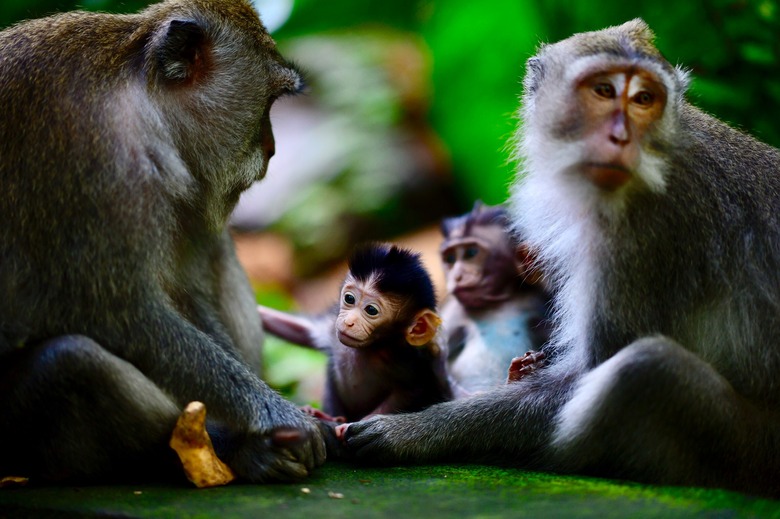Scientists Have Found A Weird New Way To Control Brain Activity – Art
New images generated by artificial intelligence (AI) can control neural activity in monkeys, according to a report published May 3 in Science Magazine.
The AI in question, an artificial neural network, learned to purposefully design images to activate specific neural responses in monkey brains – and in most cases, it worked. The resulting study revealed that AI-generated artwork caused nerve cells in macaques' brains to fire more than pictures of real objects did. Moreover, the AI could create patterns that triggered specific neurons and suppressed others.
How They Did It
How They Did It
The experiments took place about a year ago, with a team of scientists at Harvard University flickering AI-generated images in front of monkeys. The AI, called XDREAM, gradually tweaked its projected images to stimulate particular neurons in the monkey subjects' brains, according to an article in the Atlantic.
XDREAM evolved its visuals to display distorted images of faces each monkey subject might recognize. It pinpointed the visuals that triggered the strongest neural responses, and used that information to create new artwork. Eventually, the AI's curated, synthetic images succeeded in triggering more intense neural responses than any natural image could.
What This Means
What This Means
Arash Afraz, a neuroscientist at the National Institute of Mental Health, told Science News that this study revealed "magnificent technical progress."
That's because neuroscientists may want to induce specific brain activity patterns in their experiments to learn more about the unique responsibilities of different neurons, Afraz told Science News.
"The direct way of doing that is to roll your sleeves up, open up the skull and stick something in there," he said. "Now, we have a new tool in our toolbox."
The study, authored by Pouya Bashivan, Kohitij Kar and James J. DiCarlo, demonstrate a new strategy for manipulating neurons. This technique may lead to new treatments for mental health issues, such as anxiety disorders and post-traumatic stress disorder.
As reported by Science News, "similar to the way that people use light therapy boxes to assuage seasonal affective disorder or look at peaceful nature scenes to calm down, people may someday be soothed by gazing upon images that an AI tailor-made to boost mood."
Potential Impacts on AI
Potential Impacts on AI
This type of control over neural activity is unprecedented, and also provides new insight into how AI works. Artificial neural networks like the one used in this experiment are made from computer models comprising virtual neurons, arranged similarly to biological neurons. These AIs can recognize objects in photographs, but neuroscientists have debated over whether the artificial neural networks can truly process and understand the images they "see."
The report from Bashivan and the team, however, demonstrate that these AIs do, in fact, understand visual information and can therefore create visuals with the intention to manipulate monkey neurons. Artificial neural networks may help scientists better understand how human vision works in the future, according to Science News.
Cite This Article
MLA
Swanston, Brenna. "Scientists Have Found A Weird New Way To Control Brain Activity – Art" sciencing.com, https://www.sciencing.com/scientists-have-found-a-weird-new-way-to-control-brain-activity-art-13718859/. 8 May 2019.
APA
Swanston, Brenna. (2019, May 8). Scientists Have Found A Weird New Way To Control Brain Activity – Art. sciencing.com. Retrieved from https://www.sciencing.com/scientists-have-found-a-weird-new-way-to-control-brain-activity-art-13718859/
Chicago
Swanston, Brenna. Scientists Have Found A Weird New Way To Control Brain Activity – Art last modified August 30, 2022. https://www.sciencing.com/scientists-have-found-a-weird-new-way-to-control-brain-activity-art-13718859/
